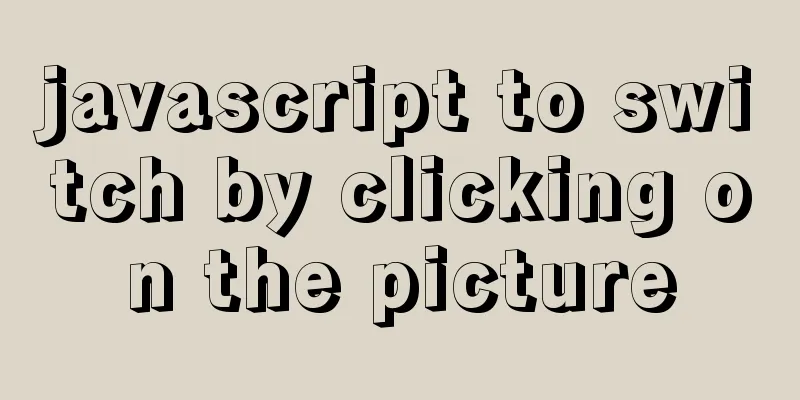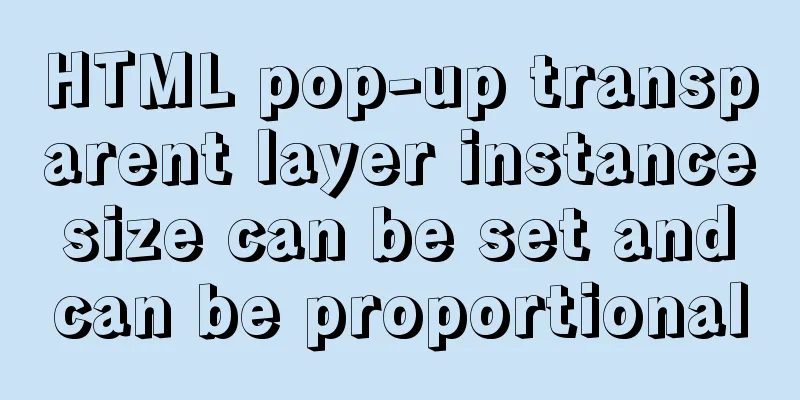How to use native JS to implement touch sliding monitoring events

PrefaceI wrote a small demo today. There is a part involving the logic of swiping left and right. I originally wanted to use a plug-in, but I remembered that I haven’t used native JS to write sliding monitoring for a long time, so I tried to implement it with native JS. After all, reviewing the old can help you learn the new, and at the same time make a record. First post the achieved effect:
ConceptionTo write a smooth touch sliding event listener, you need to consider the following three aspects of logic:
With the basic idea, we can complete the code according to this idea~ Listening eventsWhen it comes to monitoring touch sliding, the following three touch events are naturally used: 1. touchstart Touch start, triggered when a finger clicks the screen (multi-touch can be monitored, and the following fingers will also trigger) 2. touchmove The contact point changes and is continuously triggered when sliding 3. touchend Touch ends, triggered when the finger leaves the screen Each of these three touch events includes three touch object lists (multi-touch can be implemented based on the touch points): 1. touches: a list of all finger touch points on the current screen 2. targetTouches: List of fingers on the current DOM element 3. changedTouches: List of current event fingers At the same time, each touch object Touch contains the following properties: - identifier: unique ID that identifies the touch - pageX: the x coordinate of the touch point on the page - pageY: the y coordinate of the touch point on the page - screenX: the x coordinate of the touch point on the screen - screenY: the y coordinate of the touch point on the screen - clientX: the x coordinate of the touch point in the viewport - clientY: the y coordinate of the touch point in the viewport - target: the DOM node that was touched Code ImplementationWith the above ideas and the foundation of touch events, we can easily write the code~
let box = document.querySelector('body') // Listener object let startTime = '' // Touch start time let startDistanceX = '' // Touch start X-axis position let startDistanceY = '' // Touch start Y-axis position let endTime = '' // Touch end time let endDistanceX = '' // Touch end X-axis position let endDistanceY = '' // Touch end Y-axis position let moveTime = '' // Touch time let moveDistanceX = '' // Touch move X-axis distance let moveDistanceY = '' // Touch move Y-axis distance box.addEventListener("touchstart", (e) => {
startTime = new Date().getTime()
startDistanceX = e.touches[0].screenX
startDistanceY = e.touches[0].screenY
})
box.addEventListener("touchend", (e) => {
endTime = new Date().getTime()
endDistanceX = e.changedTouches[0].screenX
endDistanceY = e.changedTouches[0].screenY
moveTime = endTime - startTime
moveDistanceX = startDistanceX - endDistanceX
moveDistanceY = startDistanceY - endDistanceY
console.log(moveDistanceX, moveDistanceY)
// Determine if the sliding distance exceeds 40 and the time is less than 500 milliseconds if ((Math.abs(moveDistanceX) > 40 || Math.abs(moveDistanceY) > 40) && moveTime < 500) {
// Determine whether the distance moved on the X axis is greater than the distance moved on the Y axis if (Math.abs(moveDistanceX) > Math.abs(moveDistanceY)) {
// Left and right console.log(moveDistanceX > 0 ? 'left' : 'right')
} else {
// Up and down console.log(moveDistanceY > 0 ? 'up' : 'down')
}
}
})
Let’s run it and see:
It can be seen that the touch time will not be triggered if it is greater than 500ms, and the sliding distance will not be triggered if it is less than 40. If it is an angled sliding, the longest moving distance on the XY axis will prevail. Perfectly achieved! postscriptThe front-end framework is developing rapidly, and many people have no pressure to learn the framework directly, so they don’t pay much attention to learning native JS. But no matter how things change, the essence remains the same. The advantage of the framework lies in its design ideas and patterns. If you want to have a deep understanding, you still need to have native JS as a foundation. If you want to go far, you still need to lay a solid foundation. After all, a tall building starts from the ground, right? This concludes this article on how to use native JS to implement touch sliding monitoring events. For more relevant JS touch sliding monitoring event content, please search for previous articles on 123WORDPRESS.COM or continue to browse the following related articles. I hope everyone will support 123WORDPRESS.COM in the future! You may also be interested in:
|
<<: Linux sudo vulnerability could lead to unauthorized privileged access
>>: Explanation of MySQL's horizontal and vertical table partitioning
Recommend
Implementation steps for docker deployment of springboot and vue projects
Table of contents A. Docker deployment of springb...
Detailed explanation of the problem of failure to synchronize warehouse cache after changing yum source in CentOS8
Cause of the problem: At first, the default yum s...
MySQL trigger trigger add, delete, modify and query operation example
This article uses examples to describe the add, d...
Detailed explanation of how to use eslint in vue
Table of contents 1. Description 2. Download rela...
Getting Started: A brief introduction to HTML's basic tags and attributes
HTML is made up of tags and attributes, which are...
How to implement controllable dotted line with CSS
Preface Using css to generate dotted lines is a p...
Detailed explanation of Vue's TodoList case
<template> <div id="root"> ...
How complicated is the priority of CSS styles?
Last night, I was looking at an interview question...
dl, dt, dd list label examples
The dd and dt tags are used for lists. We usually...
Detailed explanation of the working principle and usage of the Docker image submission command commit
After creating a container locally, you can creat...
Detailed explanation of CSS3 Flex elastic layout example code
1. Basic Concepts //Any container can be specifie...
Windows keeps remote desktop from being automatically disconnected for a long time
Anyone who has used Windows Remote Desktop to con...
jQuery implements accordion effects
This article shares the specific code of jQuery t...
A brief discussion on four solutions for Vue single page SEO
Table of contents 1.Nuxt server-side rendering ap...
Linux steps to configure local yum source, configure domestic yum source, and configure epel source
1. Configure local yum source 1. Mount the ISO im...











